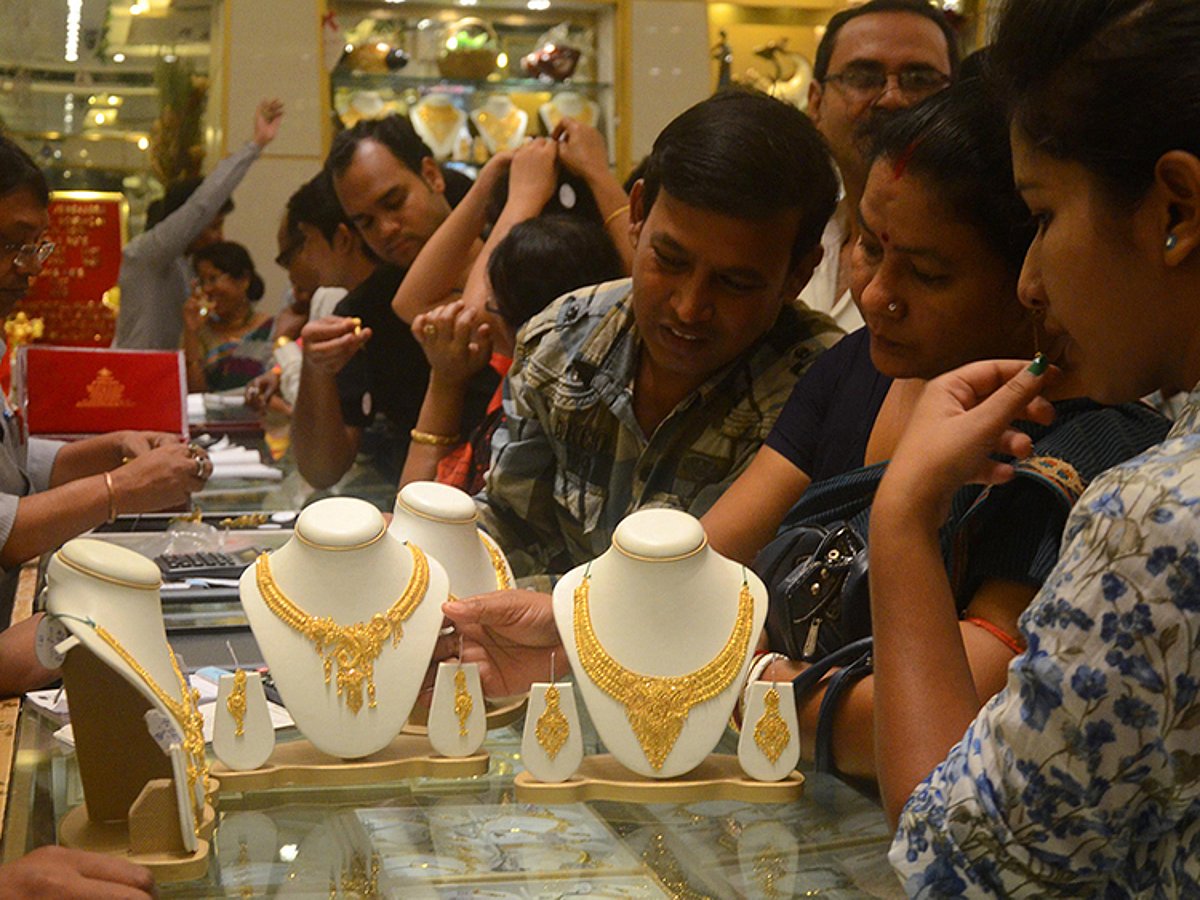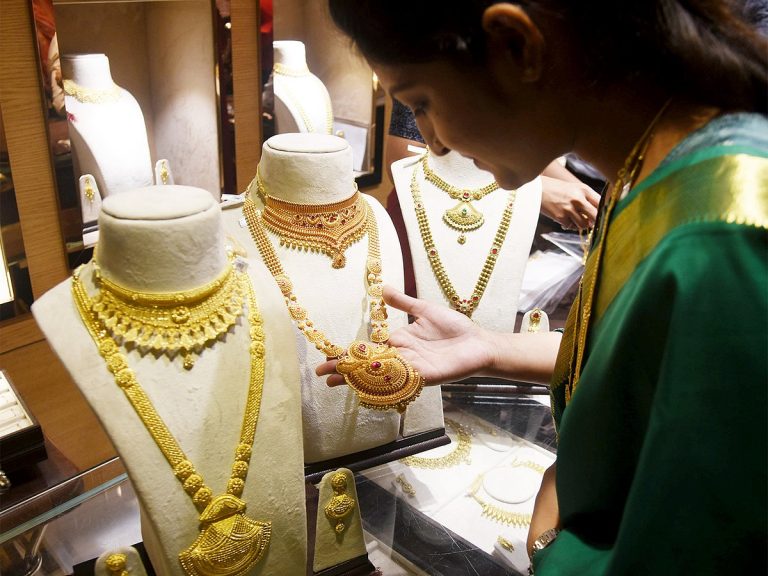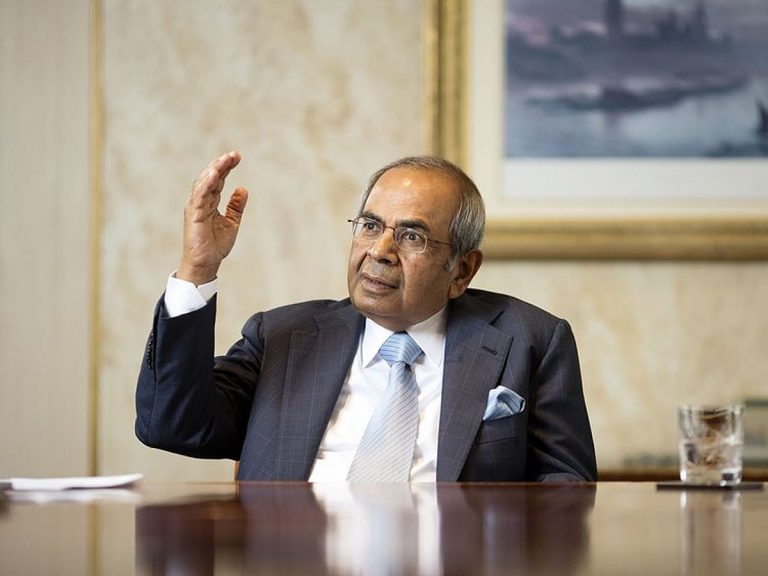Gold Prices Rise in UAE Amid Global Economic Uncertainty
Gold prices in the UAE have reached unprecedented levels this week, driven by a combination of global economic uncertainty and rising geopolitical tensions. As of Friday morning, the price of 24-carat gold hit Dh523 per gram, while 22-carat gold was priced at Dh484.25. This increase of nearly 5% since Monday reflects a growing trend of investors seeking safe-haven assets.
Impact on Festive Budgets
This year’s Diwali celebrations are proving to be particularly costly for gold buyers in the UAE. Retailers have reported that the soaring prices are prompting shoppers to reassess their spending plans. Many are opting for lighter jewelry designs, smaller coins, or everyday wear instead of more elaborate pieces. Some customers are even delaying purchases, hoping for a price correction after the festive season.
Factors Driving Gold Prices
Analysts attribute the recent surge in gold prices to a mix of global challenges. Heightened tensions between the US and China, an ongoing US government shutdown, and expectations of further interest rate cuts by the US Federal Reserve have all contributed to gold’s appeal as a safe investment. On Thursday, gold prices reached over $4,270 per ounce, while silver also saw a significant increase of more than 3% due to tight supply conditions in the London market.
Market sentiment is increasingly leaning towards the likelihood of the Federal Reserve implementing another rate cut this month. Fed Chair Jerome Powell has indicated that a 25 basis-point reduction is anticipated. Additionally, the renewed trade tensions initiated by former President Donald Trump and Treasury Secretary Scott Bessent’s comments on slowing tariff hikes have added to market volatility, prompting investors to shift away from riskier assets.
The Debasement Trade
Interest rate cuts typically lower the opportunity cost of holding gold, making it a more attractive option for investors. With lower yields on bonds and cash, many are turning to gold as a way to preserve value. Currently, traders are pricing in a 97% probability of a 25-basis-point cut in October, which is seen as bullish for gold.
Another factor contributing to the rise in gold prices is the so-called “debasement trade.” This trend reflects a growing preference for hard assets like gold over sovereign debt and fiat currencies, driven by concerns over increasing fiscal deficits. Central banks around the world continue to purchase gold, reinforcing the structural demand that supports its ongoing price increase.
Global Market Trends
On the international front, spot gold prices have even surpassed $4,300 per ounce during intraday trading this week. HSBC has revised its price forecasts for 2025 and 2026, citing sustained demand for safe-haven assets, ongoing macroeconomic uncertainty, and robust buying from official sectors.
FAQs
Why are gold prices rising in the UAE?
Gold prices are rising due to global economic uncertainty, geopolitical tensions, and expectations of further interest rate cuts by the US Federal Reserve, leading investors to seek safe-haven assets.
How are consumers responding to high gold prices during Diwali?
Many consumers are adjusting their budgets by opting for lighter jewelry designs or postponing purchases altogether, hoping for a price drop after the festive season.
What is the “debasement trade” and how does it affect gold prices?
The “debasement trade” refers to the shift from fiat currencies and sovereign debt to hard assets like gold, driven by concerns over fiscal deficits. This trend increases demand for gold, contributing to rising prices.
Conclusion
The surge in gold prices in the UAE reflects a complex interplay of global economic factors and investor behavior. As the market anticipates further interest rate cuts and navigates geopolitical uncertainties, consumers may need to adapt their purchasing strategies. Keeping an eye on market trends will be essential for both buyers and investors in the coming weeks.
The rising gold prices in the UAE are part of a broader trend observed globally, where investors are increasingly turning to precious metals as a hedge against inflation and currency fluctuations. This shift is often influenced by central bank policies and the overall economic climate, which can lead to heightened volatility in financial markets.
As consumers navigate these changes, the jewelry industry may also adapt by offering more affordable options and flexible payment plans to accommodate buyers’ needs during this festive season. Retailers are likely to monitor market conditions closely, adjusting their inventory and pricing strategies in response to ongoing fluctuations in gold prices.
Also Read:
Gold and Silver Prices Soar Amid Economic Concerns







